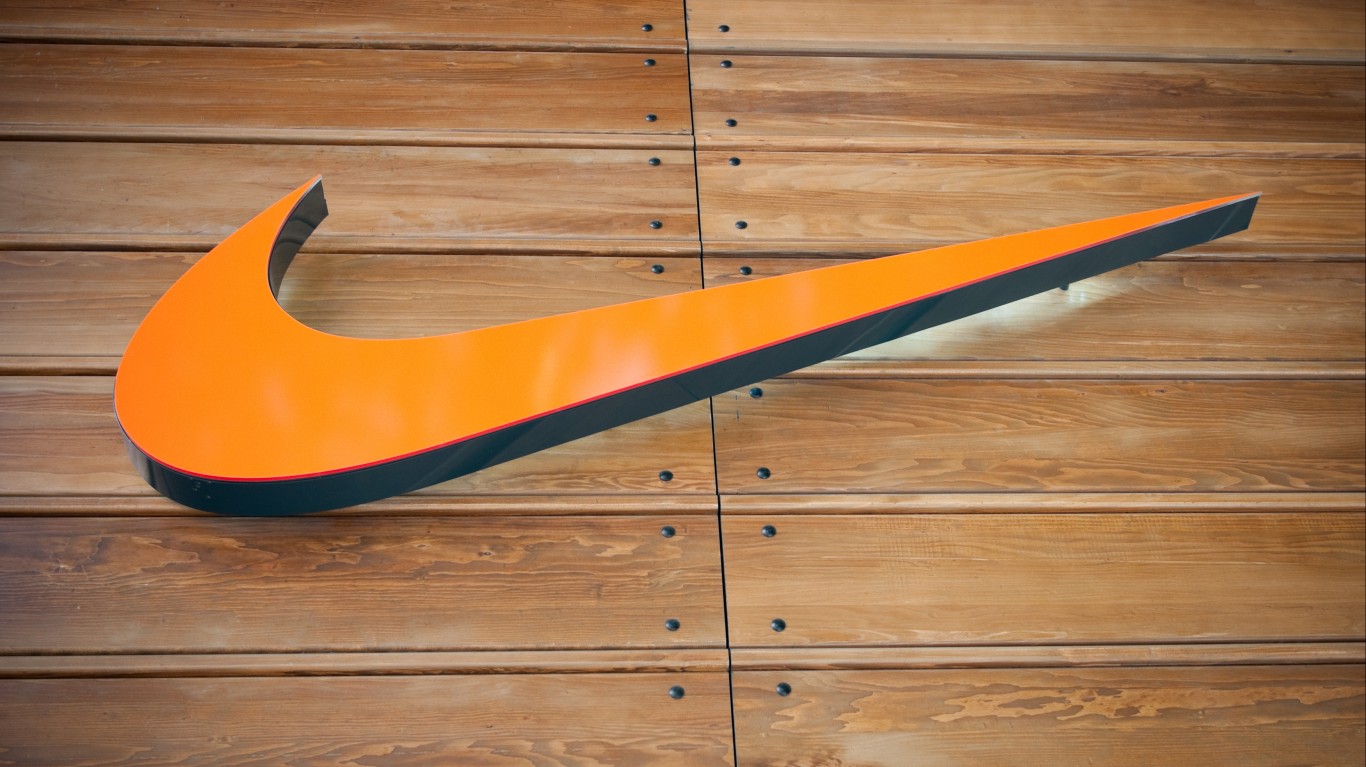There has been no shortage of successful product launches in 2012. Think the iPhone 5 and “The Avengers.” In order for companies to have successful launches, they must invest a great deal, ranging from thousands of development hours to millions in marketing costs. Yet, sometimes, despite the best efforts and the large investments, the products fail. 24/7 Wall St. editors reviewed 2012 product launches to find which were the biggest flops.
Click here to see the 8 worst product flops of 2012
To be considered a flop, the company that rolled out the product must have invested significant resources in its development and marketing. Once the product was released, the failure had to have happened quickly. None of the products on our list were on the market much longer than a few months before they were regarded as a flop. Finally, once the products failed, the companies took a sizable hit to both their reputation and, in some cases, their bottom line. One company, Sony, has two products on this list.
These products failed for several reasons. Some of the flops were due to significant company errors that caused the product to be faulty. Apple Maps, one of the worst flops of the year by any measure, was riddled with egregious flaws such as mislabeled buildings, streets and even cities. Sony’s unusual clamshell shaped tablet sold so poorly the company stopped offering it on its American Website.
Competition from popular rivals also played a major role in these flops. ABC’s “Pan Am” initially started off with strong ratings, but the novelty quickly wore off, and the series did not have enough to offer to viewers over other popular shows or sports. Sony’s PlayStation Vita had trouble competing with the popular Nintendo 3DS, never mind competition from smartphone and tablet gaming. The Nokia Lumia 900, which operates on Microsoft’s Windows operating platform, just did not stand a chance against the strong branding of app-heavy Google Android and Apple iOS-based phones.
The intense competition that many of these products faced made pricing difficult. AT&T, which carried the Lumia, had to cut the price of the already inexpensive phone due to lackluster demand. Intel’s Ultrabook was widely panned as too expensive, especially with more people taking advantage of cheaper mobile options.
These are the worst product flops of 2012.
1. Apple Maps
> Company: Apple Inc. (NASDAQ: AAPL)
When Apple upgraded its operating platform to the iOS6, the company decided to dump rival Google’s Maps system and replace it with its own product. When the service debuted in September, though, a host of problems arose. Users quickly noticed incorrect information, such as confusing Greenland with the Indian Ocean. Some images were only in black and white, and some points on the map were obscured by clouds. The fiasco was so bad that Apple CEO Tim Cook wrote a public letter apologizing for the mess. When Apple’s senior vice president of iOS software, Scott Forstall, refused to sign the letter, he was shown the door. As the company tried to solve the problem, it recommended using its competitors services. This month, Google maps returned to the iPhone and became the most downloaded app in the iTunes store less than a day after its release.
Also Read: The Best and Worst Run States in America
2. Dodge Dart
> Company: Chrysler
Chrysler placed much emphasis on the Dart, hoping it could compete with other compact cars such as the Honda Civic, Toyota Corolla and Ford Focus. The company began its marketing campaign during the Major League Baseball All-Star game with a 90-second commercial featuring NFL quarterback Tom Brady. Even though Chrysler aimed for the fences, the Dart appears to have struck out. Initial sales were as low as 200 units a month. And although Chrysler managed to sell 4,500 Darts in November, it was well below sales of the Civic and Corolla, which sold 30,075 and 22,255, respectively, during the same month. Analysts at Edmunds.com tell 24/7 Wall St. that Chrysler did not have experience selling compact cars in the same manner it had selling Jeeps and trucks. Reviewers from Consumer Reports failed to give the Dart its “recommended” rating due to powertrain issues.
3. “John Carter”
>Company: Walt Disney Co. (NYSE: DIS)
“John Carter” was widely touted by Disney, but the ingredients to make it a success were never there. The director, Andrew Stanton, had never directed a live-action movie before. The executives producing the film had minimal experience running a movie production. The reviews were, to be generous, mixed. The science-fiction movie, which cost $250 million to make and another $100 million to promote, opened with a meager $30.6 million in U.S. ticket sales. Foreign sales helped boost opening weekend to more than $100 million, but sales quickly fell. Disney said shortly after the release it would take a $200 million write-down on the movie, making it the biggest box-office dud ever.
4. Sony Tablet P
> Company: Sony (NYSE: SNE)
Earlier this year Sony debuted the Tablet P, the company’s attempt to make tablets an even more portable experience. The P features a unique clamshell design, allowing the device to fold in half and fit into a pocket. This feature, however, also resulted in a flaw that ruined the device for most users. In order to fold, the screen is split in half by a large, black hinge, which makes playing games and reading incredibly awkward. Because of the screen split, as well as complaints about the operating system and touchscreen sensitivity, the P garnered horrible reviews. In response to poor sales, the device was sold at steep discount — dropping from $549 to $199 — within a few months. In August, Sony announced it would be updating the Android operating system to the latest “Jellybean” version for the Sony Tablet S, but that the P would not be updated. The company is no longer selling the tablet on its American website.
5. Nokia Lumia 900
> Company: Nokia Corp. (NYSE: NOK)
The Lumia 900 was introduced at the Consumer Electronics Show back in January, but sales were never able to take off. Although the phone debuted at just $100 with a two-year contract, AT&T soon dropped the price to $50 to improve sales — and even that didn’t work. A consistent criticism of the phone was that its screen resolution was weaker than competitor phones and, more importantly, that the Microsoft’s Windows operating platform had a shortage of apps. By November, Nokia started selling the Lumia 920, and early predictions for sales of the newer version were mixed. Nokia, once the world’s largest mobile phone maker, has steadily declined in recent years, losing significant market share to companies such as Samsung and Apple. In the third quarter of 2012, Nokia’s market share of smartphones was just 4.3%, according to Gartner Research.
6. “Pan Am”
> Company: Disney
Disney’s second product flop of the year comes from its television segment. “Pan Am,” which debuted in September 2011, was heavily promoted by ABC. With stars such as Christina Ricci, the show was meant to take off in the ratings. Excluding promotion, the cost of the pilot episode was $10 million. The show’s debut was strong, with more than 11 million viewers tuning in. However, by the time the last episode was aired in February, viewership was down to below 4 million. That same evening, 10 million people watched “CSI Miami” and 7.7 million people watched the season premier of “The Celebrity Apprentice.” Critics pointed to a host of issues, including a dull plot line and competition from other major shows. There were rumors that Amazon would pick up the show for its streaming service, but the contracts for the cast and crew had expired. The show was officially cancelled in May.
Also Read: Ten Brands That Will Disappear In 2013
7. Ultrabook
> Company: Intel Corp. (NASDAQ: INTC)
When Intel released the Ultrabook, it looked to be the key competitor to Apple’s MacBook. That clearly has not happened. Earlier this year, research firm IHS had forecast that 22 million ultrabooks would be shipped by the end of 2012 and an additional 61 million would be shipped in 2013. However, by October, the firm changed its projections drastically, predicting that just 10 million would be sold this year, and only 44 million would be sold in 2013. The problem with the Ultrabook is twofold. Ultrabooks are highly expensive in a market where pricing is everything — the majority cost around $1,000. But the larger issue is the increasing movement to mobile devices such as smartphones and tablets. “There once was a time when everyone knew the ‘Dude you’re getting a Dell’ slogan,” IHS analyst Craig Stice said in the firm’s report. “Nowadays no one can remember a tag line for a new PC product, including for any single ultrabook.”
8. PlayStation Vita
> Company: Sony
Released first in Japan in December 2011 and then globally in February 2012, initial sales of the PlayStation Vita were encouraging. By the end of February, the company announced it had sold approximately 1.2 million units, followed by an additional 2 million units of software for the handheld game console. Yet sales quickly declined. From its release date to June 30, just 2.2 million PlayStation Vita units were sold, far less than the 3.6 million units Nintendo 3DS sold in just its first month. Recently, Sony has clumped sales of the Vita and its predecessor, the PSP, together to avoid highlighting embarrassing sales figures. Frequent complaints about the Vita were that the $300 price tag was too expensive and that its game lineup was both weak and small, especially given the availability of cheaper gaming through smartphones and tablets.
Samuel Weigley
Also Read: America’s Disappearing Restaurant Chains
The Average American Is Losing Momentum On Their Savings Every Day (Sponsor)
If you’re like many Americans and keep your money ‘safe’ in a checking or savings account, think again. The average yield on a savings account is a paltry .4%1 today. Checking accounts are even worse.
But there is good news. To win qualified customers, some accounts are paying more than 7x the national average. That’s an incredible way to keep your money safe and earn more at the same time. Our top pick for high yield savings accounts includes other benefits as well. You can earn a $200 bonus and up to 7X the national average with qualifying deposits. Terms apply. Member, FDIC.
Click here to see how much more you could be earning on your savings today. It takes just a few minutes to open an account to make your money work for you.
Thank you for reading! Have some feedback for us?
Contact the 24/7 Wall St. editorial team.


